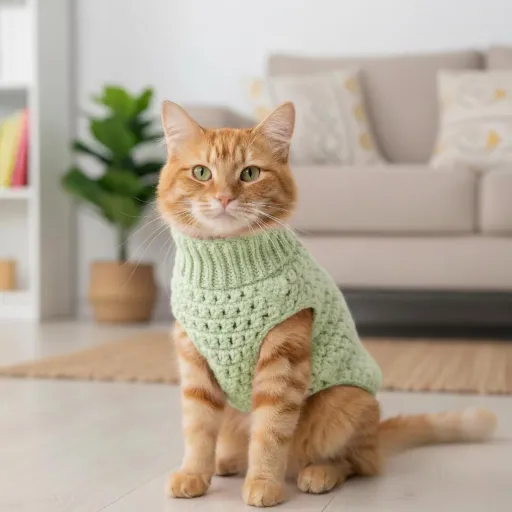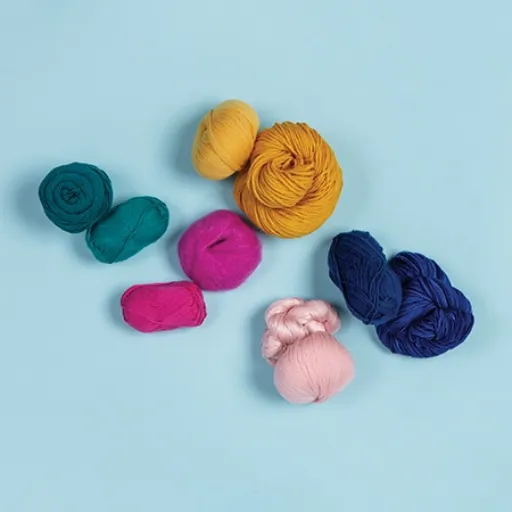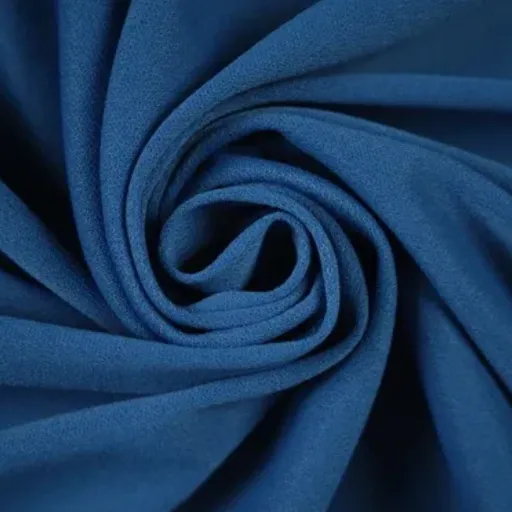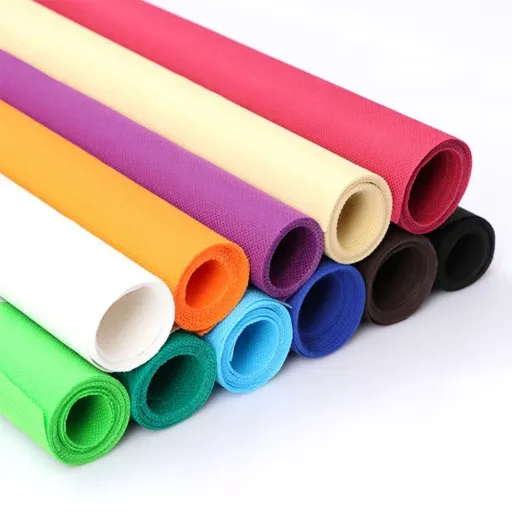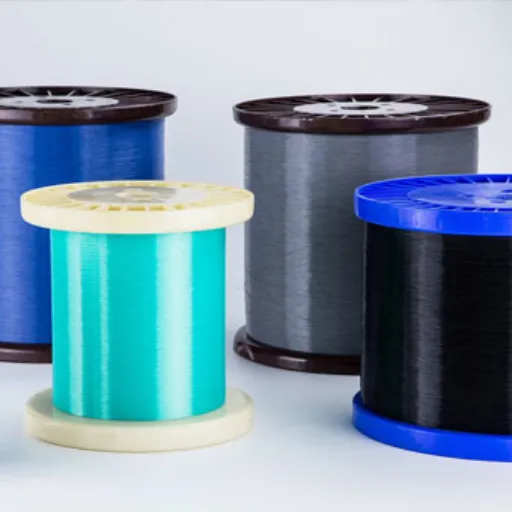Polyester fabric is among the most flexible and widely used textile materials today. Polyester has usually been preferred for clothing or furnishing fabrics since it is very durable, inexpensive, and requires minimal upkeep. However, due to many variations, understanding the various types of polyester, choosing the right one for your application, and where to buy it can get confusing. This guide intends to offer you everything regarding polyester fabric so that you learn about the types of polyester, their practical uses, and key buying tips, enabling you to make the best choices with full understanding of what the fabric has to offer.
Understanding Polyester Fabric
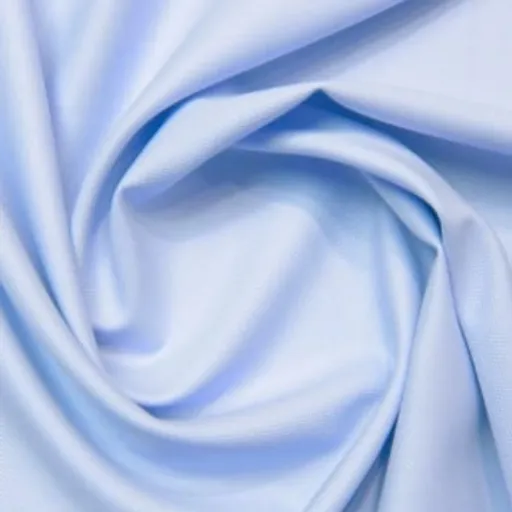
What is Polyester?
Polyester is a synthetic fiber manufactured from petrochemicals through polymerization. The major source of polyester is polyethylene terephthalate (PET), a polymer sometimes called plastic that is widely used in many industries. Known for its versatility, polyester can be woven or knitted into fabrics which find applications in clothing, upholstery, and industrial purposes.
Key Advantages of Polyester:
- Exceptional durability and resistance to shrinking, stretching, and wrinkling
- Quick-drying properties and shape retention
- Excellent adaptability when blended with natural fibers
- Cost-effective manufacturing and maintenance
Durability is perhaps greatest amongst other advantages of polyester. Shrinking, stretching, and wrinkling all seem to be the fabric’s curses-it does not indulge in any of those myths. That is why it is widely used for clothing requiring very little maintenance. It is thin and dries fast and holds on very tightly to its shape. And these are qualities desirable in activewear, outdoor apparel, and casual wear.
Another important attribute of the fabric is adaptability. Combinations of polyester and natural fibers (cotton or wool) retain the best qualities of both materials. In fact, polyester-cotton fabric is softer and more breathable yet maintains its usefulness of polyester in strength and durability. So, polyester is the most practical choice from the standpoint of cost, too, to manufacture so many items.
History and Origin of Polyester Fabric
In 1941, British chemists John Rex Whinfield and James Tennant Dickson came into the world of synthetic chemistry to produce polyester fabric. Through polymerization, they succeeded in producing polyethylene terephthalate (PET), the chemical that is polyester. The two chemists were trying to find a lightweight, durable, and versatile substance that could be cheap to produce.
Historical Milestone: By the 1950s, polyester found wide popularity for being cheap yet strong, resisting shrinkage and wrinkles, unlike cotton and wool, two traditional natural fibers. Its very introduction in the consumer market marked a turning point for the entire textile industry that revolutionized the manufacture and care of clothes and fabrics.
Modern fabric has yet to match polyester in wide appeal among synthetic fibers. Its versatility has practically opened up lakes of application areas ranging from clothing to furnishings to industrial materials or wear. As textile technology keeps developing, such developments change polyester characteristics, allowing the making of microfibers and even natural fiber blends and recycled polyester, keeping in line with the current tendency of sustainability.
Chemical and Physical Properties of Polyester
Polyester is a synthetic polymer made chiefly by the polymerization of PET. Chemically, reaction of ethylene glycol with terephthalic acid is employed to produce polyesters with the distinct characteristic of stretching and shrinking resistance, with a level of resistance to many chemicals, thereby providing the bases for its use in diverse applications.
| Property Type | Characteristics |
|---|---|
| Chemical Properties | Resistance to chemicals, stretching, and shrinking |
| Physical Strength | Great strength combined with flexibility |
| Water Properties | Hydrophobic (water-repelling), quick-drying |
| Thermal Behavior | Heat-sensitive but high melting temperature |
Physically, polyester is well known for its great strength combined with flexibility. It resists wrinkling or creasing and is able to hold its own shape. The quick drying characteristics make polyester a major choice for apparel and home furnishings. Being hydrophobic restricts its properties to repel water but on the flip side can attract and retain stains of oil nature. Polyester’s tensile strength makes it immensely durable when used for ropes, tarpaulins, and industrial fabrics.
Common Uses of Polyester Fabric
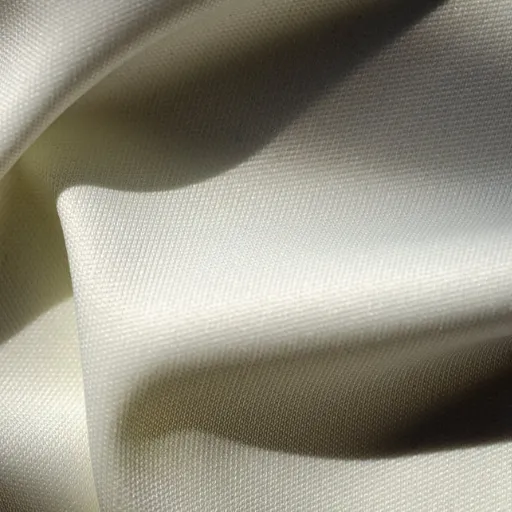
Polyester in Fashion and Apparel
Polyester still remains prominent for its qualities of durability, versatility, and affordability in the fashion and apparel industry. It is manufactured into all types of apparel, from casual and formal wear to activewear-type clothes. Unlike other fabrics, polyester does not shrink, stretch, or wrinkle easily, so they make ideal products for working in rather unforgiving situations.
Fashion Benefits
- Excellent fiber blending compatibility
- Balance of comfort and durability
- Affordable, functional, and stylish
Activewear Applications
- Superior moisture-wicking ability
- UV ray resistance
- Mildew resistance for outdoor conditions
Polyester in Home Furnishing
In home furnishing, polyester plays a pivotal role due to wearability, flexibility, and easy maintenance options. Examples cover curtains, upholstery, bed linens, and rugs. Polyester fabrics resist wrinkles, shrinking, and fading-an ideal characteristic for durable use in all sorts of home applications. They can also hold in bright colors for many years, making any home furnishing look great even after severe exposure to sunlight or repeated washing.
Home Furnishing Advantages:
- Greater value compared to natural fibers
- Easy handling and installation
- Machine washable for busy families
- Mildew-resistant properties
- Allergen resistance
- Long-lasting color retention
Industrial Applications of Polyester
Polyester has a broader application base than most other industrial fibers because it is tough, resists stretching, and shrinkage, and is comparatively more economical. A major industrial application of polyester is in the textile and apparel industry, where it is produced for use in clothing, upholstery, and industrial fabrics. Because of their ability to resist wrinkles and dry quickly, polyester fabrics are used widely in commercial and industrial textile applications.
Packaging Industry
PET plastic for bottles, food containers, and packaging materials
Construction
Fiberglass materials for roofing, insulation, and structures
Automotive
Vehicle parts and composite structures
Buying Polyester Fabric

Where to Buy Polyester Fabric Online
In general, places to shop for polyester fabrics online are specialty textile stores and fabric stores. These websites usually have very detailed descriptions that let you drill down to the very fabric type, weight, or texture. The polyester is offered by many suppliers in many forms, from extremely light materials fit for clothing to heavy frowned-on by upholsterers and industrial uses.
Online Shopping Options:
- Specialty Textile Stores: Detailed fabric descriptions and specifications
- Online Craft Marketplaces: Fabric samples, bulk buying, and customization options
- Wholesale Suppliers: Industrial quantities with quality certifications
Factors to Consider When Buying Polyester Fabric
1. Quality Assessment
- Material composition and specifications
- Fabric weight and thread count
- Durability ratings
- Quality certifications
2. Texture & Appearance
- Finish variety (smooth, shiny, soft, matte)
- Request fabric samples
- Draping characteristics
- Visual appeal assessment
3. Supplier Terms
- Minimum order quantities
- Shipping timeframes
- Return policies
- Customer service reliability
Pricing of Quality Polyester Fabric
| Fabric Type | Price Range (Per Yard) | Features |
|---|---|---|
| Plain Polyester | $3 – $10 | Basic durability, standard finish |
| Specialty Polyester | $15 – $30+ | Water resistance, enhanced durability, special feel |
| Treated Polyester | Premium Pricing | UV resistance, waterproof treatment |
Budget Tip: Consider additional charges such as shipping or customization, especially on large orders. Compare suppliers for both price and quality to ensure the best value for your project.
Caring for Polyester Fabric
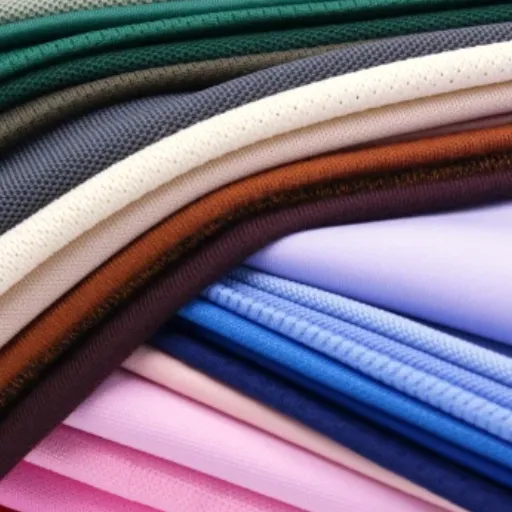
Care Instructions for Longevity
To ensure polyester fabric lasts longer, a proper care procedure must be followed. Polyester being a fairly sturdy fabric needs to be treated with care to retain its quality through time. Always check the care label of a garment or the fabric to identify any specific instructions you should follow concerning washing and drying, as different articles might have subtle variations.
✓ Washing Guidelines
- Use cold or warm water
- Mild detergent only
- Avoid hot water
- Gentle cycle setting
- Avoid overloading
✓ Drying Tips
- Air-dry when possible
- Low heat dryer settings
- Remove immediately after drying
- Avoid high temperatures
✓ Ironing Safety
- Cool iron temperature
- Use pressing cloth
- Avoid direct heat contact
- Prevent melting damage
Common Mistakes to Avoid
❌ Critical Care Mistakes
1. Using High Heat Settings
High temperatures from washing, drying, or ironing will damage polyester fibers and lead to shrinkage or melting or loss of shape. Usage of low heat is recommended when using a dryer, while ironing should be done at low temperature with a pressing cloth.
2. Neglecting Stain Removal Before Washing
Failing to treat stains before washing will cause permanent marks on polyester clothing. Polyester tends to trap oils and other residues, so pre-treating these stains with a gentle stain remover or mild detergent is vital.
3. Overloading the Washing Machine
Polyester fabrics may get creased and worn out when actually packed into a washer along with too many other items. Smaller loads offer ample room to wash and prevent unwanted wrinkling.
DIY Crafts with Polyester Fabric
Being highly versatile, polyester fabric is a preferred medium in almost all DIY crafts owing to its durability, ease of maintenance, and availability in numerous colors and designs. Very lightweight and bouncy when manipulated, this fabric is an excellent choice for projects ranging from home décor to accessories. Polyester is considered a solid basis for anyone, seasoned or beginner, to experiment with.
🛍️ Reusable Shopping Bags
Protection from hazardous-heavy groceries is assured with polyester, resisting further wear and tear. The common shopping bag-making uses a few materials; one needs only the fabric, scissors, and basic sewing skills.
Benefits: Durable for multiple uses without fading, customizable with painted designs or embroidery
🏠 Pillow Covers & Cushions
Polyester fabric can be inexpensive and comes in countless different prints to suit your style of home décor. With a few simple cuts and stitches, you can change the ambiance of your living area.
Advantages: Stain and fade resistant, stays fresh and vibrant with use
Comparing Polyester with Other Fabrics
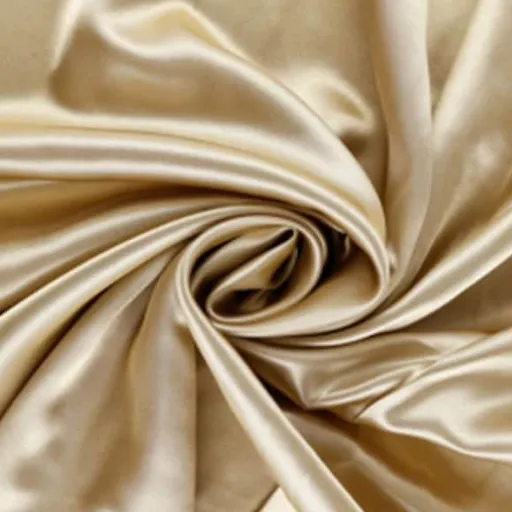
Polyester vs. Cotton: Pros and Cons
When comparing polyester and cotton, the main distinction lies in their advantages and disadvantages, making each suitable for different uses depending on your orientation. When this distinction is clear, you can better decide on the fabric that fits your needs.
| Aspect | Polyester Advantages | Cotton Advantages |
|---|---|---|
| Durability | Wrinkle-resistant, maintains shape, quick-dry | Natural softness, breathable |
| Comfort | Moisture-wicking for active wear | Hypoallergenic, better skin feel |
| Maintenance | Easy care, no shrinkage | Biodegradable, environmentally friendly |
| Drawbacks | Less breathable, can retain odors | Wrinkles easily, shrinks, fades |
Polyester Versus Wool: Performance and Use Cases
🧵 POLYESTER
- Durability: Lightweight, moisture-resistant
- Care: Quick-drying, no shrinkage
- Cost: More affordable
- Best for: Activewear, outdoor gear, frequent washing
🐑 WOOL
- Warmth: Excellent insulation, breathable
- Natural: Temperature regulation, odor-resistant
- Premium: Higher cost, luxury feel
- Best for: Winter wear, formal garments, cold climates
Polyester vs. Nylon: Durability and Applications
For one thing, both polyester and nylon are considered to be durable synthetic fibers; on the other hand, they differ in terms of performance characteristics and compatible applications. Polyester resists stretching, darkening, and abrasion more so than nylon. It is used in all sorts of industries: for outdoor equipment, sportswear, and upholstery. Since it is strongly resistant against UV rays, hence it can be used in things that stay in direct sunlight for long hours.
Application Guide:
Choose Polyester For:
- Sun exposure resistance
- Quick-drying needs
- Outdoor clothing
- Furniture applications
Choose Nylon For:
- Heavy-duty strength needs
- Flexibility requirements
- Ropes and industrial materials
- Impact resistance
Frequently Asked Questions (FAQ)
Q: What is polyester fabric, and what are its uses?
A: Polyester fabric is a synthetic fiber formed of long polymer chains and is generally derived from crude oil. It is mixed with other fibers and finds applications in several textiles, from garments to upholstery to industrial applications. Polyester enjoys certain features that lend itself to easy-fit applications that are both fashion and functional in nature, particularly in terms of moisture management and fast drying.
Q: How is polyester fabric manufactured?
A: It typically commences with polymerization of the monomers–purified terephthalic acid and ethylene glycol. Once these chemicals undergo the reaction, usually a mixture of ethylene glycol and terephthalic acid, long chain polymers are produced from it. The polyester is extruded through a spinneret; these fibers are then woven or knitted into a fabric.
Q: What are the types of polyester fabric?
A: There are many types of polyester fabric, including polyester blends, cotton polyester broadcloth, and microfibers. Each type differs in texture, durability, and application. For instance, polyester blends, in general, have their uses to enhance properties, whereas cotton polyester broadcloth offers a combination of cotton’s softness with polyester’s strength.
Q: Where can one buy polyester fabric by the yard?
A: You could buy polyester fabric by the yard at most fabric stores, both online and physical. A lot of these stores would offer you a large selection of polyester materials with which to pick your coloring, pattern, or type. These popular online markets generally boast an extensive inventory, where you can hardly go wrong trying to locate the right fabric for your projects.
Q: Is polyester fabric cheaper than other fabrics?
A: Generally, polyester fabric will cost you less than natural fibers, say cotton or silk. These days, with such cheap alternatives, many people find polyester very attractive to afford. The price is affected by such factors as the quality, the intricacy of the design, or whether the fabric is measured by yardage or sold in bulk.
Q: Is polyester fabric environmentally friendly?
A: A lot has been said on the impact of polyester fabric on the environment. And while it recommends durability and easy maintenance, polyester is made out of crude oil, thus raising sustainability concerns. Also, microplastic pollution unfolds every time it gets washed. Thus, in certain measures, recycling is proving to save the worst.
Q: What role does polyester play in the production of safety belts?
A: Polyester is used for safety belts mostly because of its strength and durability. Resistance properties to wear and tear and ability to sustain very high stress make the fabric ideal for safety application. Due to such properties of polyester, safety belts ensure their reliability and efficacy to protect the person from an accident.
References
-
What is Polyester Fabric: Properties, How it’s Made and More – Sewport – A comprehensive guide on the production, properties, and global manufacturing of polyester fabric.
-
What Is Polyester? A Complete Guide – Apex Mills – Detailed insights into the production, including plant-based polyester, and its dyeing and finishing processes.
-
Polyester – Fiber Characteristics – FabricLink – Information on the special features of polyester, such as its strength, quick-drying nature, and resistance to shrinkage.
-
Polyester – Wikipedia – An overview of polyester’s properties, uses, and environmental resistance compared to other fibers.
-
Polyester: History, Definition, Advantages, and More – Xometry – A resource detailing the history, mechanical strength, and chemical resistance of polyester.








